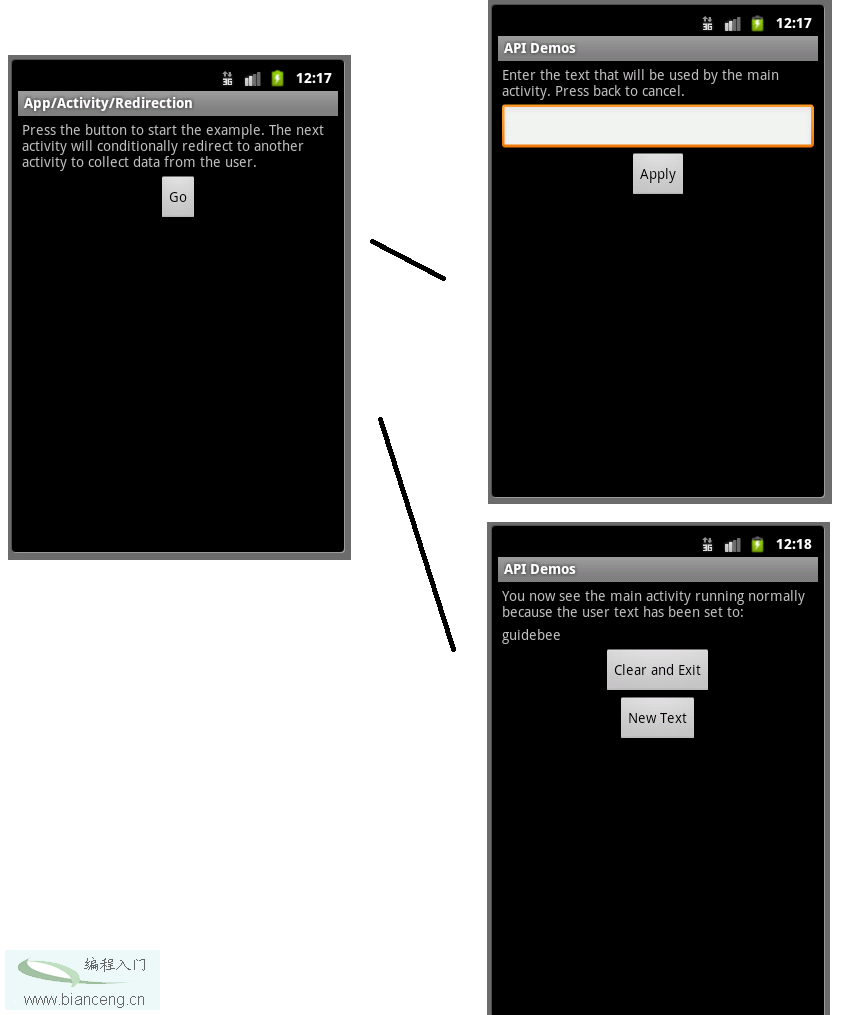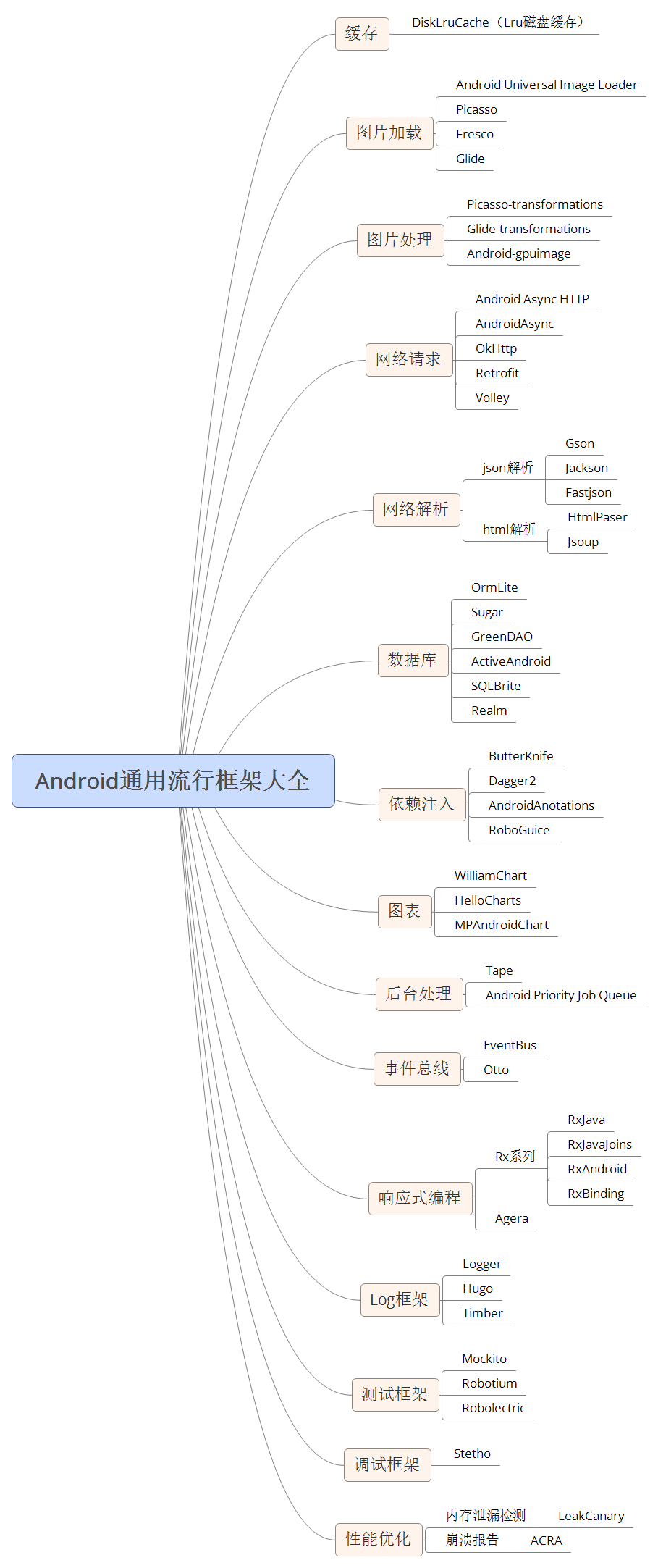編輯:Android開發教程
Redirection示例涉及到三個Acitivity: RedirectEnter, RedirectMain,RedirectGetter。示例的主Activity為 RedirectEnter ,RedirectEnter 啟動 RedirectMain, 而Activity 會根據某個條件來決定是否將應用的控制權傳給 RedirectGetter 或是保持在RedirectMain。

應用代碼中使用到了Shared Preferences (在之前的示例中介紹過)。 RedirectMain 將檢查某個shared preferences 值 是否存在:
// Retrieve the current text preference. If there is no text
// preference set, we need to get it from the user by invoking the
// activity that retrieves it. To do this cleanly, we will
// temporarily hide our own activity so it is not displayed until the
// result is returned.
if (!loadPrefs()) {
Intent intent = new Intent(this, RedirectGetter.class);
startActivityForResult(intent, INIT_TEXT_REQUEST);
}
其它用到的還有startActivityForResult 。這個例子沒有什麼新的知識,只是涉及到了三個Activity。演示了如何 根據條件觸發不同的Activity,將應用控制權Redirection到不同的Activity。

這個例子用戶點擊“Go”按鈕,RedirectEnter 啟動RedirectMain ,RedirectMain 會根據shared preferences是否有值決 定是否redirect 到RedirectGetter, 第一次或是點擊”Clear and Exit”後,shared preferences 中不含有text值,應用會顯 示RedirectGetter 來取的用戶輸入,此時如果用戶輸入並“Apply”後,RedirectGetter將在Shared Preference儲存textView 的值。此後,按“Back” 退回Activity List再啟動RedirectEnter,按“GO”,由於Shared Preferences中有值,RediectMain 不會把應用的控制權Redirect到RedirectGetter.
 Android 4.3 Jelly Bean的更新內容
Android 4.3 Jelly Bean的更新內容
上周谷歌版Galaxy S4(GT-I9505)的Android 4.3 Jelly Bean刷機包流出,也讓我們初步了解了Android 4.3的一些新特性。那麼,An
 Android平台調用WebService詳解
Android平台調用WebService詳解
上篇文章已經對Web Service及其相關知識進行了介紹(Android開發之WebService介紹 ),相信有的朋友 已經忍耐不住想試試在Android應用中調用W
 15 個 Android 通用風行框架大全
15 個 Android 通用風行框架大全
15 個 Android 通用流行框架大全 1. 緩存 DiskLruCache Java實現基於LRU的磁盤緩存 2.圖片加載 An
 Android Market鏈接的生成與分享
Android Market鏈接的生成與分享
通過Java包名直接定位到你的Apphttp://market.android.com/details?id=<java包名>或者market://detai